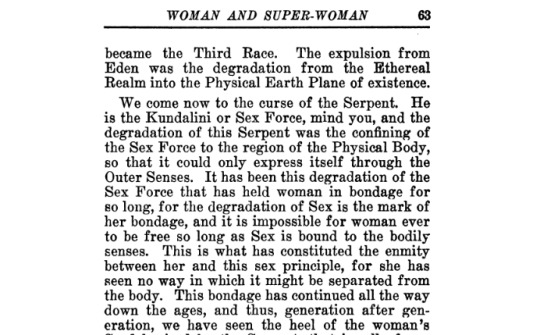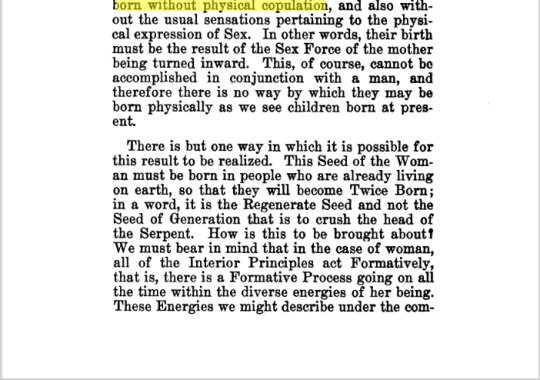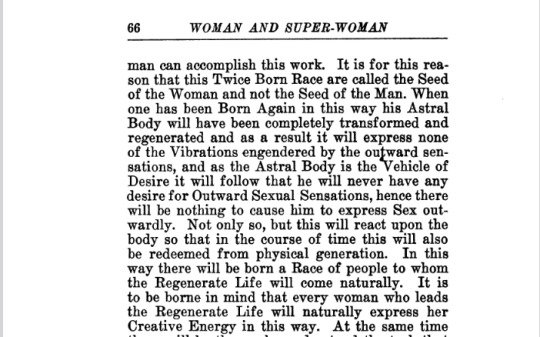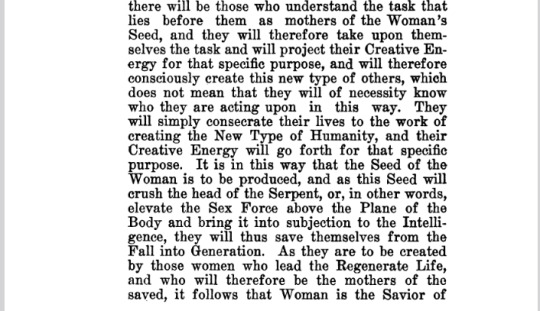#parthenogenesis
Text
#parthenogenesis#american crocodile#crocodylus acutus#crocodylidae#crocodilian#pseudosuchia#archosaur#asexual reproduction
1K notes
·
View notes
Text
So, uh. Parthenogenesis (or, "virgin birth"--female animals having children without ever mating) is recorded in a few mantis species. But...apparently it exists in a few more, too.
See, I had Bo, a shield mantis (Rhombodera megaera), and I know for a fact that she never mated. So, when she made an ooth (egg sac), I assumed it was nonviable and put it in a little jar with rice to desiccate and preserve it.
Recently, though, I checked up on it...

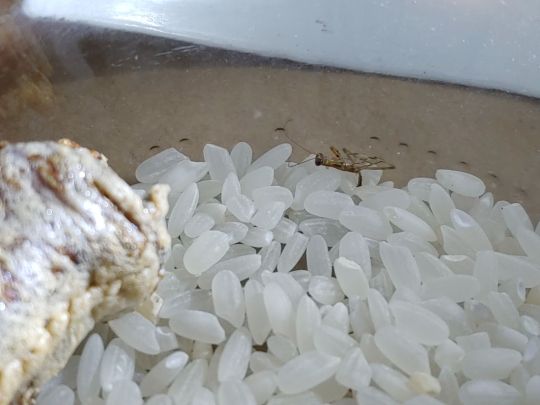
Looking closely, you can see the raptorial claws and the long prothorax, plus the little flat flipped-up abdomen. There's nothing that could be but a baby praying mantis :|
So, then I thought about the other ooths I have. My ghost mantises (two females, Phantasma and Goria) laid tons of ooths all over their sticks, and again, never mated. And sure enough, when I look at one of them now...
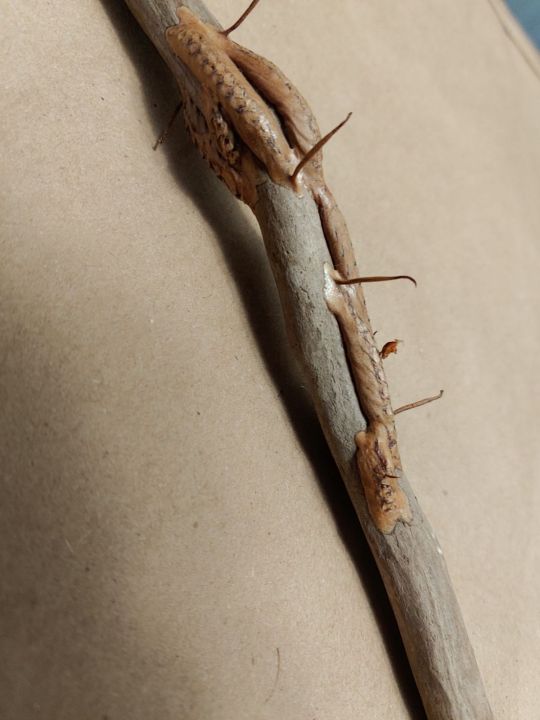
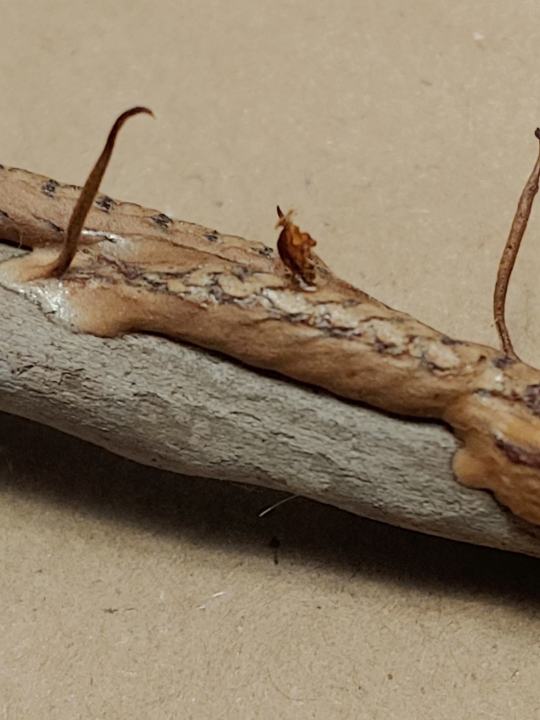
See, this was a stick I kept out in the open. And when baby mantises come out of the ooth, they're initially these little larval things called pronymphs that they immediately molt from. On top of that, this is exactly the color and texture the mother had.
This looks like a pronymph shed. So, somewhere in my room, for a little while, there was probably a baby ghost mantis wandering around.
I have never heard of parthenogenesis in either of these species or any other members of their genuses. How common is this?!!
#rev retches#insect#bug#mantis#praying mantis#ghost mantis#biology#parthenogenesis#bo#phantasma#goria
696 notes
·
View notes
Text

Peekaboo is the way and the light
#big black nemesis!#parthenogenesis#no one move a muscle as the dead come home#peekaboo#snake#snakes#reptile#reptiles#reptiblr#corn snake#corn snakes#corn snake morphs#classic corn snake#a snesus
324 notes
·
View notes
Text
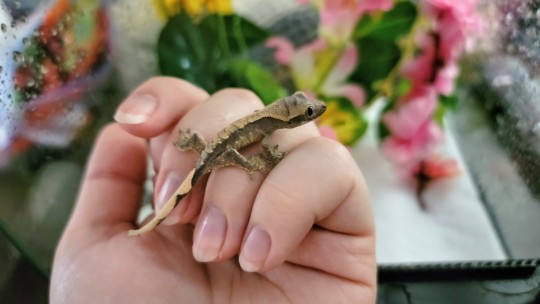
Y'all I'm fucking shaking and sobbing.. Kiwi had a baby 😭
I've had Kiwi since she was barely bigger than this baby. Parthenogenesis (the ability to lay a fertilized egg without a mate) is extremely rare in crested geckos.
I know she laid eggs like 2 weeks ago, but eggs take 60-70 days to hatch, so she must've laid some a while ago that I wasn't aware of.
I absolutely cannot believe this
#as far as i know babies from parthenogenesis dont live very long#so im trying to not get attached#crested gecko#gecko#reptiblr#kiwi#im in shock rn#this is a clone of kiwi 😭😭😭😭#peach#mygeckos#myreptiles#parthenogenesis
793 notes
·
View notes
Text
A Trans Easter Miracle (with ants)
In order to understand my shock and amazement at what is in this photo I took today, you need to know a little about ant reproduction. Basically, nearly all ants reproduce through "haplodiploidy." This is where the sex of an ant is determined by the number of chromosomes. Female ants (workers and queens) have twice as many chromosomes as males.
This means that female ants can lay egg without mating and they will all be males. Only after mating can queen produce the female workers that make up most of their colony.
So when I accidentally killed the queen of my Dorymyrmex bureni colony I thought the colony was doomed. Even though the queen left a large pile of eggs that would grow up when they were gone it would be the end.
But then a remarkable thing started to happen. Rather than raising the eggs left by the dead queen to be more workers the workers (still some 500 strong) raised some of these eggs to be queens. It was remarkable to watch.
But this isn't the "Miracle!"
An unfertilized queen does the colony no good. She can only produce more male workers. So when I saw batches of eggs in the colony I was interested, but I assumed they would all be male alates. It wouldn't save the colony.
But then I noticed this:
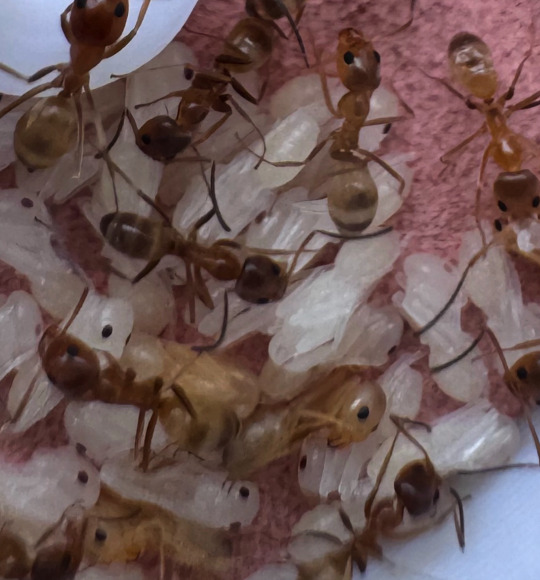
Parthenogenesis!?
Some of these new batches of eggs have developed into female workers! How is this possible? I do not know. I assume it has something to do with "trans easter."
#parthenogenesis#ants#ant sex#ant queens#dorymyrmex bureni#dorymyrmex#ant posting#antposting#bugblr#bugs#insects#invertebrates#myrmecology#antblr#antkeeping#ant
108 notes
·
View notes
Text

Okay, I'm trying to follow the logic here.
So eggs = women, cis centric and reductive but sure I follow.
Peaches? Don't peaches = butt? Do men not have butts? Are peaches vulvas?! 🍑??? This looks like a butt to me.
Onto the next door, sausage = penis right? But then what the heck is a banana? Also a penis? Why would they have it twice?
Do cis men have hemipenes?
And no butt??
Further more, if you're equating women with eggs, should you not equate men with sperm?
Clearly these bathrooms are not for humans but for a species of parthogenic females with butts on the left and hemipeened non-reproductive individuals with no butts on the right.
So basically bathrooms that one species of lesbian parthonigenic lizard.
Additionally, what in the poorly drawn chemical configuration is this?

#that was a journey#parthenogenesis#lizards#cis centric gendered bathrooms#What is wrong with a toilet on one and a urinal on the other??
282 notes
·
View notes
Text
Topic of the day: lesbian lizards.
There's a species of lizards that are entirely female (they really said no boys today honey) living in North America and Mexico. So how do they make baby lizards without males?
They reproduce by parthenogenesis (and are one of the few if not the only species of animal to reproduce only by this method). Parthenogenesis is a reproduction form where the female sexual cells develop without the masculine ones (eggs undergo a chromosome doubling after meiosis, developing into lizards without being fertilized), and it can happen in insects, birds, fishes and reptiles.
The desert grassland whiptail lizard (Aspidoscelis uniparens) does this, but! The ovulation is enhanced by female-female courtship and mating (pseudo-copulation) rituals that resemble the behavior other lizards that reproduce sexually.
So they are the absolute only-female lesbian queens.
#zoology facts with adhara#learning#learnsomethingneweveryday#random fact#lizards#lesbian lizards#parthenogenesis#zoology#biology#maybe i'm a nerd#science#science facts#zoology facts#lesbian#female#animals#animal facts#learn with me#my blog is getting random#wildlife#animal behavior#zoology nerd#random#random facts#writer#writers on tumblr#writing#writing community
23 notes
·
View notes
Text
Alecto calls Annabeth "Athena's offspring", the use of 'offspring' could have been intended because Athena canonically pops children out of her head. Thats Parthenogenesis, that's why 'offspring'.
#annabeth chase#alecto tlt#athena#parthenogenesis#Percy Jackson and the Olympians#the lightning thief#rick riordan#pjo tv show#pjo series#riordanverse
26 notes
·
View notes
Text
Kaijubiology: Mothra and the Elias
Intro to Kaijubiology
Godzilla biology
Monsterverse inspired, but incorporates the Toho movies and other giant monster media.
While Godzilla is unquestionably the most famous of all hyperfauna, likely the most beloved by the general public is Gigatinea mosura, commonly known as Mothra. This is due to the fact that, more than any other kaiju, Mothra is known to intervene on humanity's behalf when other kaiju threaten us and is response to ecological disasters. For her power and influence, Mothra has been given the title "Queen of the Monsters" in common parlance.
Gigatinea mosura is a species of insectoid hyperfauna bearing a strong resemblance to insects of the order Lepidoptera (butterflies and moths). All known members of the species are female and reproduce through parthenogenesis. Upon reaching adulthood, a Mothra will lay eggs (usually one, but occasionally more) and can lay additional eggs shoudl an existing egg or larva be destroyed. In the larval stage, Mothra resembles a large caterpillar with a brown, undecorated exoskeleton, small compound eyes sunken into the head, and a set of mandibles that open and close vertically. Inside the mouth are silk glands that can produce a fluid that can be ejected from the gland in a powerful stream. This fluid rapidly condenses into a sticky and extremely strong silk. This silk spit is the primary means of defense that larval Mothras have. They will attempt to immobilize a threat in silk before fleeing. Larval Mothras are self-sufficient from birth, but will typically associate with and be protected by their mother. Larval mothras consume large quantities of both vegetation and radiation in preparation for metamorphosis. When not in the presence of an adult, larval Mothras will metamorphose as soon as they are able to. An adult can direct larvae to remain in the larval form, possibly as an adaptation to prevent competition or prevent metamorphosis until conditions are optimal for it. Metamorphosis begins with the larva using its silk glands to build a cocoon for itself. Metamorphosis takes place over the course of several days, though the process can be hastened at the cost of internal energy stores. Even while in metamorphosis, the larva appears to remtain some awareness of its surroundings and can continue to communicate with other hyperfauna using its bioacoustics.
An adult Mothra resembles a moth or butterfly, but has similar mouthparts to that of the larval stage. The most notable feature of an adult Mothra is her wings. The wings (two per side) are brightly colored and each individual's wing patterns are unique. This implies that there is some unknown mechanism that results in greater genetic diversity between parent and offspring than would normally occur in parthenogenesis. The wings are also bioluminescent. Patches on the wings can produce light in many colors and varying brightness. It is believed that at least some of the colors and patterns are used for communication or to express mood. Fascinatingly, there are multiple variants or morphs of adult Mothra that are specialized for different circumstances. The determining factor for which morph a larva will metamorphose into appears to be epigenetic, triggered by differing circumstances during the larval and cocoon stages of development. Known morphs are listed below. Elias art suggests the presence of more morphs that are not known to modern science.
-The morph most commonly observed is referred to as the primary morph. This stage features short, grasping legs and large, rounded wings more specialized for sustained flight than speed and maneuverability. The primary morph is believed to be the one a larva will metamorphose into when conditions do not require a more specialized form. Most abilities possessed by the primary morph are also possessed by other morphs. Like other winged hyperfauna, Mothra can cause windstorms created by flapping wings. he wings can also grow and release scales in the form of a brightly-colored powder. These scales have a soporific effect on most kaiju when inhaled. Additionally, primary morph Mothra has been shown to be capable of releasing scales with other effects. On one occasion, a Mothra assisted with the cleanup of an oil spill in the Atlantic Ocean by releasing scales into the water that bonded with the oil and triggered a chemical reaction that caused the oil to clump together and become buoyant and non-reactive, greatly limiting the damage caused by the oil and making cleanup easier. Another ability shared in all forms is an outgrowth of Mothra's bioluminescence that allows her to project a beam of ionized particles from the base of her wings. The Elias people's term for these beams is "god rays" and they are used as a long-range weapon. The primary morph is less able to use god rays than other morphs, often only being able to perform the action once before requiring time to rest.
-The combat morph appears when a metamorphosing larva is exposed to hostile kaiju. This morph is specialized for combat and speed, but is not as durable as the primary morph. In this morph, Mothra's body is slimmer, the legs are longer and possess sharpened grasping edges, and the wings are angular. This is also the only morph which retains the silk glands of the larva. The combat morph is also able to use god rays more effectively than the primary morph and has a stinger that can extend out of the abdomen. The stinger delivers a venom that is believed to have intoxicating and soporific effects on other kaiju.
-The armored morph also appears when a metamorphosing larva is exposed to hostile kaiju. It is unclear which stimuli trigger the armored morph to appear instead of the combat morph and vise versa. As the name suggests, the armored morph possesses a seemingly metallic armor over the body and leading edge of the wings. In addition to providing extra stability, the armor also appears to be able to reflect "beam" type attacks from other kaiju, such as the Gojira genus's a"atomic breath". The armor makes this morph slower than the other morphs, but it is extremely durable even by kaiju standards.
-The aquatic morph has only been observed by science on one occasion, when Infant Island was threatened by the amphibious kaiju Dagarah (Okaenodraco dagarah). The aquatic morph is the most different from the other morphs. The four wings are arranged differently and are too small for flight. Instead, they act as fins, allowing for swimming. The body lacks the fur that other morphs have, instead having smooth scales to reduce water resistance. The legs are small, resulting in slow movement on land. The head has armor plating which is streamlined in a way that reduces water resistance.
Unlike most hyperfauna, which have extremely long lifespans, Gigatinea mosura rarely live longer than four years once they reach their adult forms. Because they lay eggs after reaching their adult form, there will always be another generation barring the death of the larva before more eggs can be laid. Presumably the species was more numerous prior to the interior earth mass extinction and therefore at less danger of extinction due to the death of the larvae. All known Mothras have originated from the same place: Infant Island, located to the east of the Philippines. Infant Island is a wellspring of interior earth radiation, making it a prime habitat for hyperfauna. Indeed, several of the recorded battles between a Mothra and another kaiju have apparently been territorial battles with the other kaiju seeking to claim Infant Island for themselves. Infant Island is currently a place of concern to conservationists as the only known remaining habitat of the species.
Mothra's existence was revealed to the world at large in 1961 when billionaire Clark Nelson arranged a trip to Infant Island, the inhabitants of which had until then only been contacted a handful of times. He ultimately abducted several of the native Elias people and took them back to his home in Rolisica, a small and notoriously corrupt nation in the Indonesian islands, where he treated them as zoo animals and exhibited them off to guests. Because of his political and monetary power in Rolisica, police did not intervene. Mothra, still in her larval state, swam from Infant Island to Rolisica and travelled through the island. While footage and testimony from the event indicate Mothra did not actively attempt to cause any destruction, but ultimately did so as a consequence of her sheer size. The larva ultimately cocooned herself and emerged several days later as an adult. By this time, riots had begun and the Nelson estate was stormed by a group consisting of civilians, police, and former Nelson employees. Nelson was killed in the struggle and the captive Elias were freed. To get Mothra's attention, a group pf people painted the symbol used by the Elias to represent her on an airport runway. Mothra landed on the runway and the captive Elias were presented to her. Mothra allowed the Elias to climb onto her and carried them back to Infant Island. In the aftermath of the incident, Infant Island was declared a no-go zone by international agreement, to prevent a possible future attack by Mothra. The only exception are scientific expeditions with the permission of the Elias. Since then, Mothras have left Infant Island several times. These are often to confront another kaiju or to prevent or help repair ecological disasters. Of all known hyperfauna, the Mothras are the most benevolent to humans, actively going out of their way to avoid collateral damage and even acting to prevent human death for seemingly no benefit to themselves. They also tend to avoid killing other kaiju if given an opportunity to avoid it. It is not clear if these are traits the species developed in response to their long association with the Elias, or if these traits were what drew the ancestors of the Elias to the species.
Gigatinea mosura is one of the four known alpha species: species that can command the obedience of other hyperfauna species. The other alpha species are Godzilla (Gojirasaurus collosseus), Gamera (Hypertestudine pyrovoria), and Kong (Titanopithecus kongii). A closely related species is Gigatinea battura (Battra) and a more distantly related species is Micromosura fairi (fairy Mothra), a species of subkaiju that resemble miniature primary morph Mothras reaching up to 38 centimeters in length. The Elias refer to these as "Mosura fai'rii", meaning "little Mothra" and often keep them as pets while protecting them from their natural predators, the garugaru (Microdraco garugaru).
Mothra is central to the culture of the native people of Infant Island, the Elias. The Elias worship the species as a goddess of life and rebirth and refer to the species as Mosura. The common name Mothra comes from a poor transliteration of Mosura. In Elias belief, there is only a single Mothra who is reincarnated through her larvae. Some scientists hypothesize that the species has a form of genetic memory that allows memories to be passed down from parent to child. Mothra is viewed as a goddess of life who protects the delicate balance of nature and who taught the Elias to live in harmony with the natural world. Mothra is believed to speak to the Elias through a pair of identical twin priestesses called the Shobijin, meaning "twin beauties" in the Elias language. The Elias people have an unusually high incidence of identical twins and twins are considered special. The Elias believe in reincarnation and believe that identical twins are the result of Mothra choosing to incarnate the same soul twice at the same time. All identical twin girls are sent to the Shobijin for instruction, though only one pair will be chosen as the next Shobijin. The Elias believe that the Shobijin can commune with Mothra and there is evidence that some form of communication between the Elias and Mothra is possible, but how this is done is not currently known. The relationship between the Elias and Mothra is almost identical to a trend often seen in interior earth cultures where a culture will bond with and be protected by a kaiju. Examples of this are the Iwi with Kong, Seatopi with Megalon (Gigicoeloptera subterra), and Muan with Manda (Kairyu manda). It is currently hypothesized that the Elias are descended from an interior earth culture that migrated to the surface, possibly along with a population of Mothra. Other hyperfauna also feature in Elias beliefs, most prominently Battra, who is seen as a dark mirror to Mothra who wishes to return the world to a state before humanity appeared. Another piece of evidence that the Elias are descended from an interior earth culture is the use of a cultural motif found in several known interior earth cultures: an unknown winged kaiju with three heads. The Elias refuse to speak about this motif with outsiders and seem to fear the symbol. Anthropologists refer to the three-headed kaiju motif as monster zero.
Out of universe notes: the different morphs are my way to incorporating the different forms Mothra has taken in the franchise. The primary morph is the classic Toho Mothra, the combat morph is the Monsterverse Mothra, and the armored and aquatic morphs are forms taken by Mothra Leo in the Rebirth of Mothra movies.
In the original movie, Rolisica is somewhere in Europe. I moved it to Indonesia largely to give the larva a shorter trip and let its entry to the city be a surprise as it can swim instead of walking across Asia in a world where Kaiju are known about and feared. If Rolisica was in its movie location, the larva would have been seen and attacked by multiple militaries long before reaching the city to pick up the Elias and its arrival would not have been a surprise.
I debated whether I wanted to have the people who live on Infant Island be the Elias (Rebirth of Mothra name for the Shobijin) or Houtua (from the anime trilogy). I ultimately picked Elias mostly because I liked Rebirth of Mothra and didn't like the anime movies, but I think my Elias would take a lot of inspiration from the Houtua in terms of dress, body art, etc.
Gigatinea (tinea means moth) is a shout-out to Gigamoth, a scrapped concept for an evil twin Mothra that was later revised into Battra.
#speculative biology#worldbuilding#mothra#godzilla#monsterverse#elias#shobijin#rebirth of mothra#kaiju#kaijubiology#battra#fairy mothra#garugaru#dagarah#mothra leo#parthenogenesis#moth
15 notes
·
View notes
Text
Ngl I feel like the only reason why birthing a newborn hurts so much is because we are not creating newborns through parthenogenesis, the baby is an invasive creature in the mother's body sucking up all her nutrients, I mean why the hell would the immune system try to kill sperm during sex?
Or why do 1/4 in early stage pregnancies spontaneously end in miscarriages and most of them are male? That's because that baby isn't her, the mother host thinks it's something else, and the mother host can't recognize it but this is just my theory tho lol
But I mean, there are also other factors like the way women give birth laying on their backs making it harder and longer to push the baby out because of gravity, Have you ever tried taking a shit lying on your back? That's literally the same thing when it comes to birthing a child lol
36 notes
·
View notes
Text
I've seen people genuinely upset by some species being all female and like. Why does that bother you so much lol
44 notes
·
View notes
Text


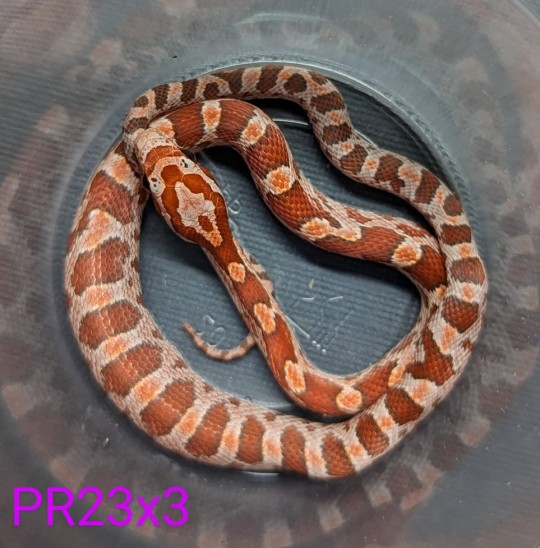


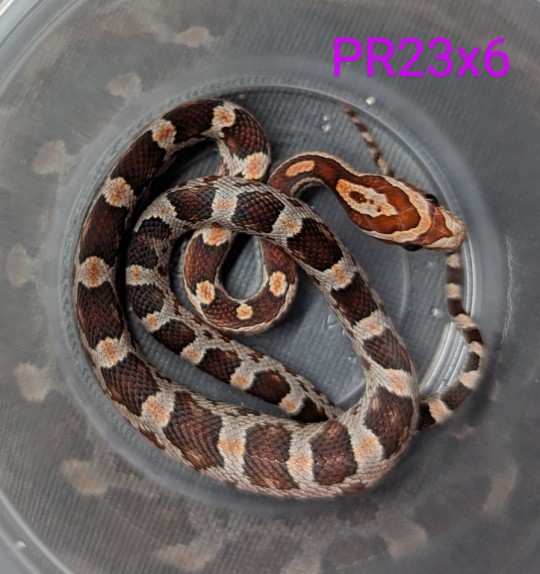






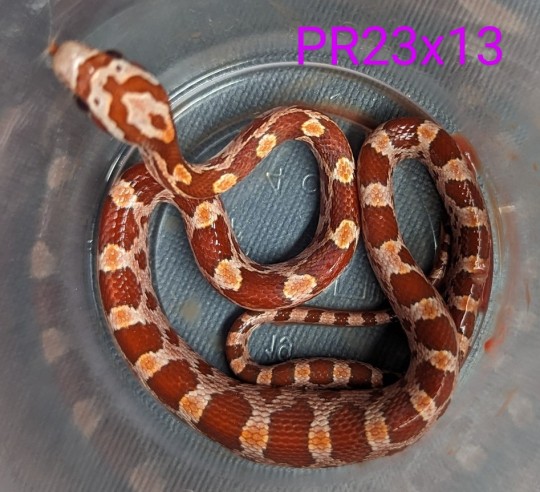
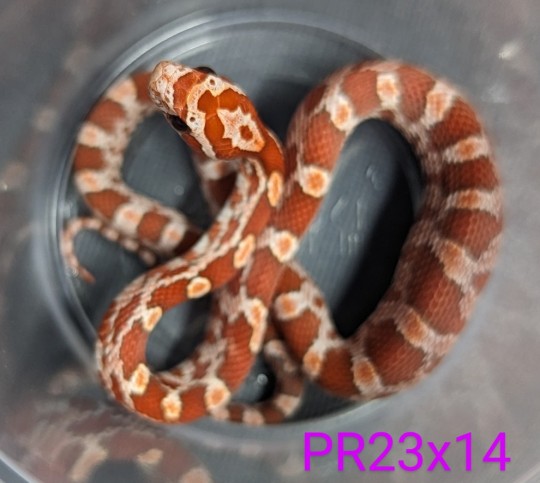

PR23 have all shed and almost all of them were eager to try food! Please excuse the light gore on a couple of them... they were so enthusiastic that they popped their dinners and rolled around in the goo. Side note: I hate feeding f/t pinks for this exact reason. So gross.
This was a second proving year for their mother Peekaboo, the sole baby from a doomed pairing (don't buy snakes sight unseen from strip mall pet stores, kids!) and so far I'm a bit stumped.
Peekaboo's parents were a high-red (Red Factor or Redcoat?) Snow Motley/Stripe and a Diffused Hypo Lavender. I didn't observe any breeding behaviors and they did not produce eggs the year they bred, but Peekaboo's mom laid two fertile eggs the following year. One collapsed, and from the other sprang Peekaboo. At the time I assumed the clutch was fertilized by retained sperm.
If that were the case, Peekaboo should be at minimum het for Amel, Anery, Motley, Diffused, Hypo, and Lavender. So far I'm seeing no Lavender and no Diffused in clutch PR23 with Ringwood, my Peach Diffused Hypo Lavender guy. Peekaboo didn't prove out het Lavender last year, either.
I didn't pair Peekaboo's mom with anybody else. I got her as a subadult and I'd had her for two years before her one and only pairing, and she passed a month later from a retained unfertilized egg that I didn't know about until her necropsy.
At this point I'm thinking Peekaboo might be a parthenogenic baby?????
#PR23#PR23 ref#snake#snakes#reptile#reptiles#reptiblr#corn snake#corn snakes#baby snake#corn snake morphs#classic corn snake#amel corn snake#hypo corn snake#maybe Peeks really is a Snesus?#parthenogenesis#everybody happy as the dead come home#tw death mention#cw death mention#death mention
82 notes
·
View notes
Text
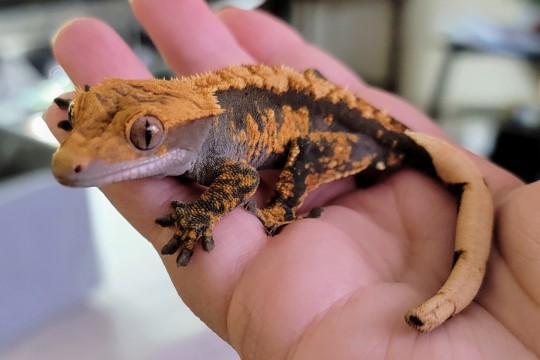


Some new pictures of Peach from today, she's getting so big 😭 and also she's so much calmer when handling now, I think she's finally getting used to me 😭
84 notes
·
View notes
Text
thinking again about how my mother’s cousin was in the wicker man (as one of the girls dancing in the stone circle), but neither of them could see it when it came out because it was rated x and they were both thirteen. my mother still hadn’t seen it until last year when i showed it to her
8 notes
·
View notes
Text

*science jokes your new deltarune lore*
#deltarune#deltarune chapter 3#spamton sweepstakes#spamton#pipis#pipis meme#Toby fox#deltarune lore#noelle holiday#parthenogenesis#pipis lore#undertale#deltarune meme#sirenmaespeaks
114 notes
·
View notes




